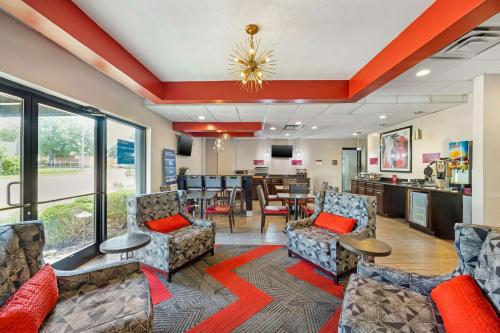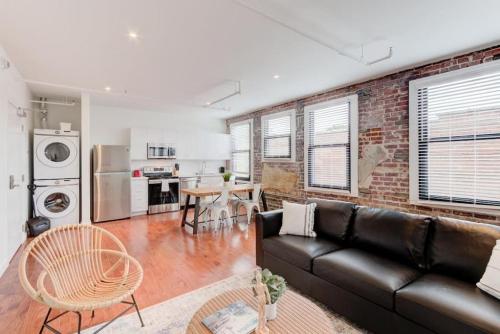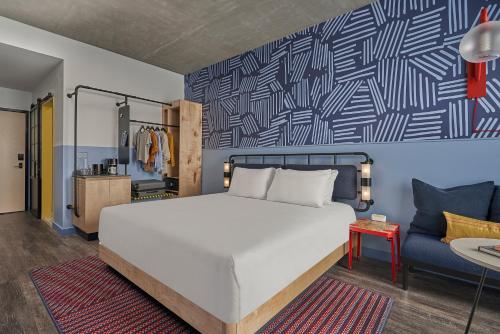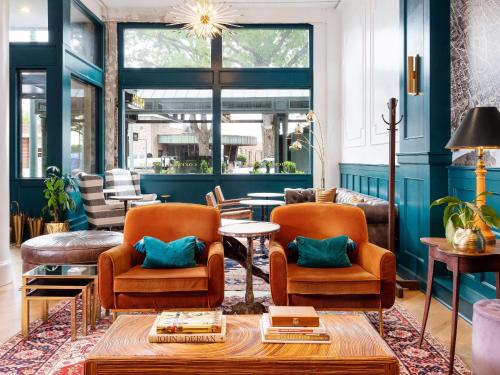Deep South civil rights
When it comes to civil rights and racial equality, there’s a lot of food for thought during a trip through the Deep South of the United States (and I’m not talking about the fried chicken!).
Everywhere you go you’re confronted with overt signs of the gap between black and white. Sometimes it’s the poverty you notice, other times it’s to do with status, occasionally it’s about the opportunities.
Mostly it’s a blending of many factors that makes you wonder how far this country has come in addressing deep-rooted social disadvantage.
Let’s take New Orleans, for example. It’s a city with a population that is 60 per cent African American but when we went to a music festival there, we saw predominately white faces and only a few black ones (Snoop Dogg, excepted).
Then there was a moment when I was passing through an airport in North Carolina that had a shoeshine stall set up.
Four (overweight) white people sat in the chairs with their dirty shoes presented to… you guessed it… four African Americans who kneeled there shining for tips.
It would have been almost poetic if it had been intentionally setup for effect but, no, it was just the way things are and no one seemed to bat an eyelid as they passed by.
Examples abound and it’s often hard to avoid glaring instances of inequality – in general the colour of the people doing the menial labour, begging for money and sleeping on benches is not the same colour as those drinking in the bars, going to concerts, or travelling as tourists.
National Civil Rights Museum Memphis
There were two things in particular that had a profound effect on me during the journey, though.
The first was a visit to the Civil Rights Museum in Memphis, Tennessee. The second was reading the book ‘The Help’ during my journey.
The Civil Rights Museum is a monument to the ignorance, selfishness and hatred of mankind. But it’s also a tribute to the bravery, tenacity and idealism of the human race.
It tells the story of how one side overcame the other in a prolonged battle of wills, where one was fighting for justice and the other fighting for power.
The museum has been built in and around the motel where Martin Luther King Jr was assassinated in 1968. It was a time that’s hard to understand for someone who was still years from being born.
I read the stories, watched the news reports, and listened to the audio guide in that museum and it just didn’t make sense how people could act in such a way towards their fellow citizens.
The Help
If the museum made me frustrated at the mob mentality, then reading ‘The Help’ by Kathryn Stockett gave that frustration a human face.
I would highly recommend you read the book, which tells the story of black maids working in Mississippi in the early 1960s.
It’s fiction but presents a vivid image of life for those women who are treated life second-class citizens by their employers, forced to use separate toilets outside because they are ‘diseased’, sexually assaulted, underpaid, and made to feel like they are only one small step above the servitude of their ancestors.
The United States has changed a lot in the decades since the man with the dream was killed and the women had their dreams beaten down by oppression.
The laws give opportunity and parity to everyone in theory, but clearly that’s not the experience in practice.
Changes to the laws and the thinking of the mainstream don’t mean that in many families the attitudes of the parents haven’t been instilled in their children.
Now, it’s important for me to say that there are some broad generalisations in this article and I’m in no position to make any judgements or present detailed analysis. However, I maintain that the United States has a long way to go on the path to equality.
Perhaps it’s just a matter of waiting for generational change to take effect. Or maybe there is still a level of racism bubbling under the surface of society.
THE BEST ACCOMMODATION IN MEMPHIS
I think the best areas to stay in Memphis are either Downtown or Midtown because you’ll be close to all the main attractions.
BUDGET

Comfortable and convenient, you’ll get what you expect at the Best Western Plus Gen X Inn, which has a fitness centre and free breakfast.
APARTMENT

With one bedroom, this sophisticated Downtown apartment is clean and spacious and excellently located to many of the main attractions.
BOUTIQUE

There’s a fun vibrant feel at Caption By Hyatt Beale Street, a modern hotel with an outdoor swimming pool, fitness centre, and terrace.
LUXURY

Vibrant and stylish, ARRIVE Memphis blends industrial and Victorian-inspired décor with sunny spacious rooms and luxurious amenities.
Turtle,
Do you think, in the long run, the fatties getting their shoes shone who will likely go on to develop insulin resistance and diabetes (or diabeetus to some) are really in the winning seat?
I went to an interesting talk on racism in Sydney’s western suburbs. The talk covered a growing antipathy between immigrant minorities in the west. One group of middle eastern 1st generation Australians from migrant families were displaced by South Asian immigrants who were working to their bootstraps to afford their university degrees they had moved to achieve, and would take any job to stay.
The point the above paragraph is trying to make is; those guys may have been shining shoes, but are you sure they weren’t shining shoes to send their sons and daughters to universities and colleges? Ultimately even though its the hard yards, surely they would be in the winning seat if that was the truth – and I hope it is.
I would say that the best ways to encourage the USA to overcome racism would be to have educational reform Gough Whitlam style.
It is a crying shame that education in the USA appears to be a luxury rather than a genuine and affordable opportunity – and with education I would tend to say comes a nicer and more constructive perspective in life.
Interesting point! I guess it goes back to that idea of generational change – and it’s relevant for both sides.
I find your article very thought provoking. Unfortunately I do believe that racism is alive and well, which is really a sad indictment on the human race. Maybe the generational change is where our hope lies.
Hopefully the new generations will not follow the mistakes of the ones before them. What a great day it will be if the promised land is truly reached!
Hi Turtle
Have just discovered your blog and really enjoying it. I have never been to the US but can’t imagine the level of racism could be a lot worse than it is here in Australia. I spent some time in Alice Springs last week. What must tourists think of the Aboriginal situation in Australia? Would be interested to read a German tourists equivalent of your blog.
Cheers, Paul
Yeah, that’s a good point about Australia – it would be a real shock to head to areas like Alice Springs as a foreign tourist! But, without trying to dismiss the issues we have with the indigenous situation, I find the inequality in the US much worse because it’s everywhere you go. It also seems that the racism was much more ingrained in parts of the American culture for so long.
I live in Canada, and I’ve been to the US but never to the south (well except a couple hour wait at Houston’s airport). I only really know about civil rights and racial equality in the US through media (books, tv) and school. And even then we only get a small bit of information. One of the best museum exhibits I ever saw was at the Bronx Museum of The Arts when I was in NYC last year. They had an entire photography exhibit on the civil rights movement and I learned that it went much further than Rosa Parks and Martin Luther King Jr.
I have no doubt that racial relations in the US aren’t perfect, and that racism still exists. But I even in Canada there’s racism and discrimination, it’s just often hidden under the surface. Hopefully the more people learn about other races and cultures the more we can eliminate racism and discrimination.
You’re completely right – there are elements of racism in most societies. The best we can do is encourage people to learn more (at places like the Bronx Museum of the Arts) and hopefully there will come a day when we don’t have these kinds of conversations.
I also visited this museum on my road trip and was most surprised I think about how segregated Memphis felt. I was born and raised in the south, and sure there are small towns that I can name that have this same feeling, but for a city, it had an eery feel. It was much too quiet.
Hey Turtle,
I lived in Chicago for six months on a work transfer. I was really shocked by the segragation. North of the loop was where the white people live and south of the loop is where the black people live. The colour of the people commuting on the red line, which runs north to south, would completely change over as it passed through the city. It was crazy. This segregation wasn’t only based on rich and poor either. A black partner at my consulting firm lived south of the loop while the white ones lived in the north. I asked him why he lived in the south and he said he couldn’t bring his kid up in a neighbourhood with no diversity…
As an asian-australian man I have never felt out of place in a bar until I walked into competely white baseball bar in Wrigley-ville.
People often say that Australia is a racist country, so that’s interesting what you say about feeling out of place. It just seems so much more obvious in the US.
I love the quote in the first picture !